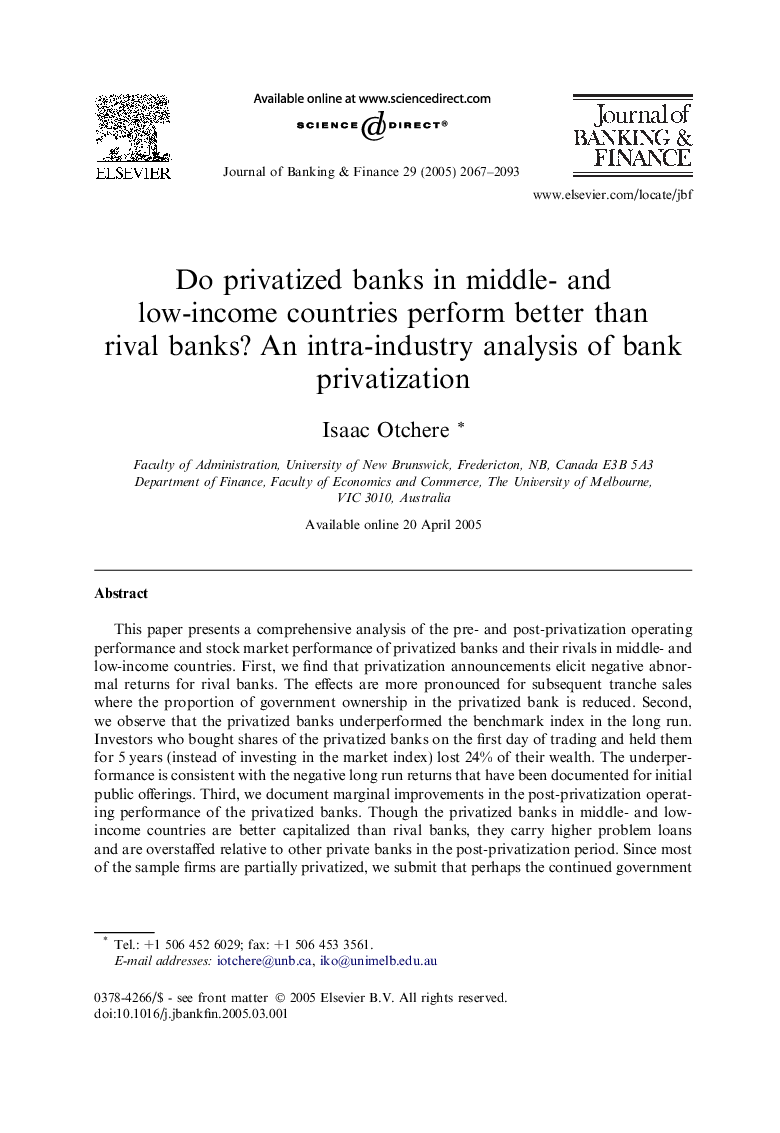| Article ID | Journal | Published Year | Pages | File Type |
|---|---|---|---|---|
| 5091504 | Journal of Banking & Finance | 2005 | 27 Pages |
Abstract
This paper presents a comprehensive analysis of the pre- and post-privatization operating performance and stock market performance of privatized banks and their rivals in middle- and low-income countries. First, we find that privatization announcements elicit negative abnormal returns for rival banks. The effects are more pronounced for subsequent tranche sales where the proportion of government ownership in the privatized bank is reduced. Second, we observe that the privatized banks underperformed the benchmark index in the long run. Investors who bought shares of the privatized banks on the first day of trading and held them for 5Â years (instead of investing in the market index) lost 24% of their wealth. The underperformance is consistent with the negative long run returns that have been documented for initial public offerings. Third, we document marginal improvements in the post-privatization operating performance of the privatized banks. Though the privatized banks in middle- and low-income countries are better capitalized than rival banks, they carry higher problem loans and are overstaffed relative to other private banks in the post-privatization period. Since most of the sample firms are partially privatized, we submit that perhaps the continued government ownership of the privatized banks might have hindered managers' ability to restructure the firms.
Related Topics
Social Sciences and Humanities
Economics, Econometrics and Finance
Economics and Econometrics
Authors
Isaac Otchere,
